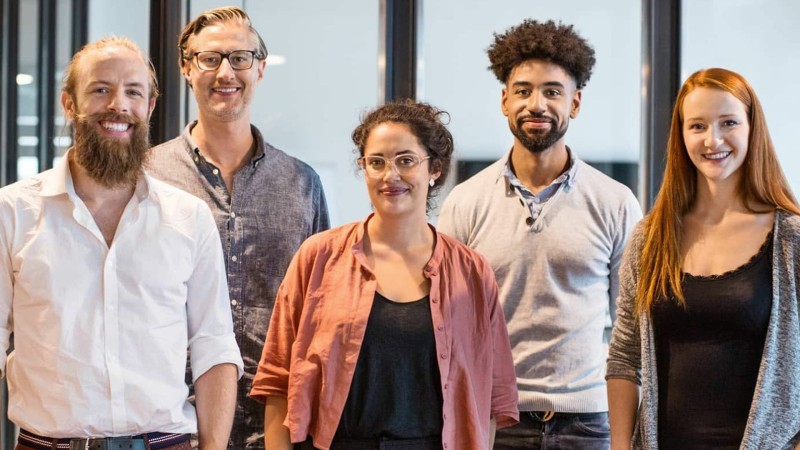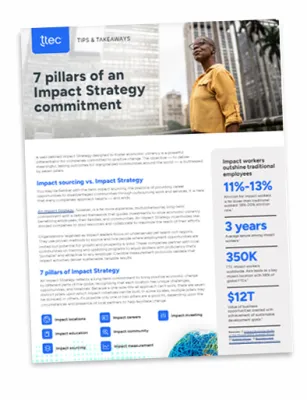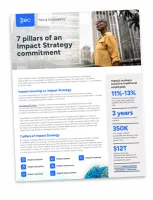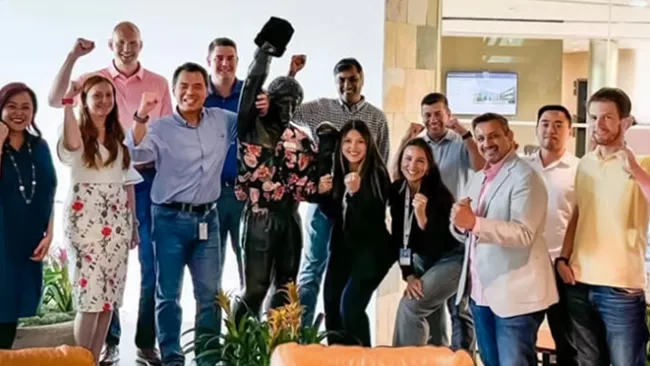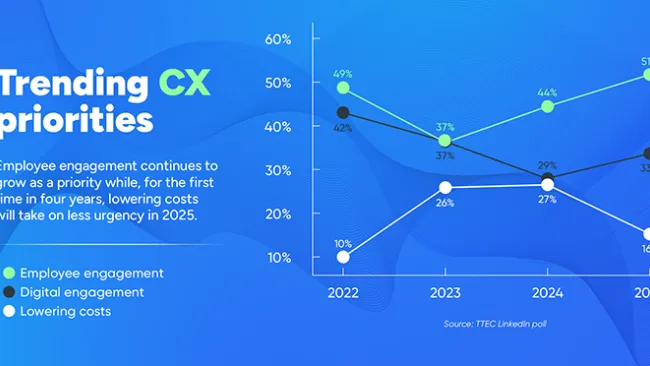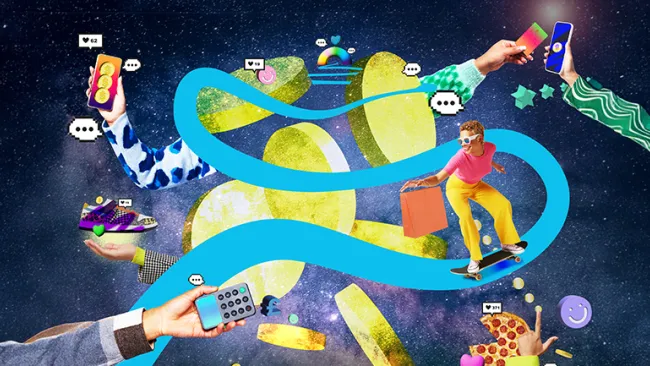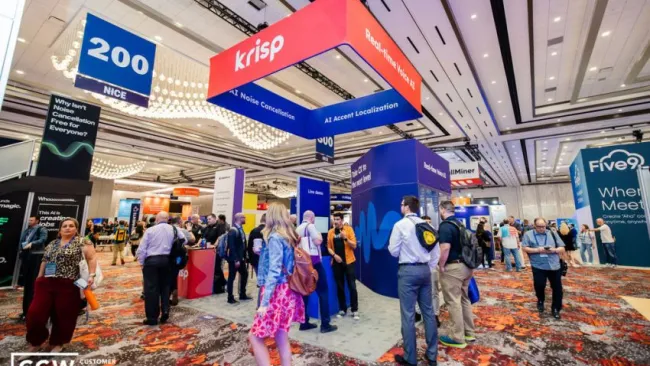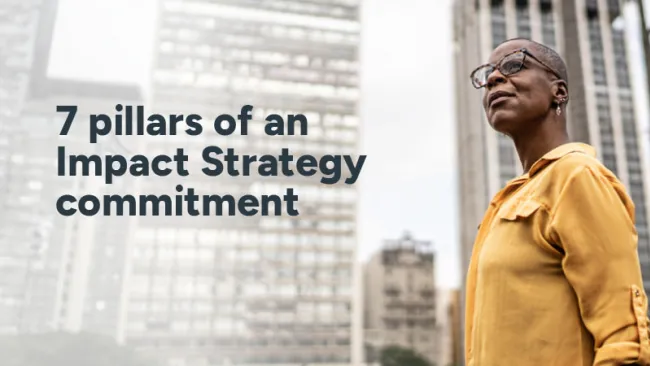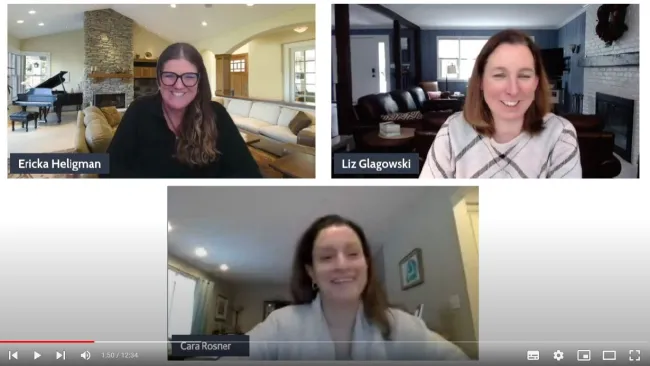As a record number of employees leave their positions in search of more fulfilling work, better pay, or other reasons, employee retention is more important than ever. Heather Younger, CEO and founder of Employee Fanatix, an employee engagement, leadership development, and consulting firm explains what employers can do to drive employee loyalty—and what pushes workers away.
Key takeaways:
- Most employers prefer to return to pre-pandemic working conditions but many employees think differently.
- Proactive leaders practice caring leadership: Daily actions that show concern and kindness to those you lead.
- Organizations that excel at employee engagement and retention have an employee listening strategy in place.
Transcript:
Judith Aquino: Welcome to the CX Pod. I'm Judith Aquino. On today's episode, we'll be talking about employee retention. Nearly four million people left their jobs in the spring and employers across different industries are struggling to fill those positions. Several factors are contributing to these hiring difficulties, which we'll discuss shortly, but there's a lot that businesses can also do to retain employees. Joining me to discuss this topic is Heather Younger. She's the founder of employee engagement and leadership development firm, Employee Fanatix. Welcome to the show, Heather.
Heather Younger: Thank you, and thanks for having me.
JA: So thinking back to this time last year, I don't think anyone expected to go from mass layoffs to the great resignation of 2021. Why are so many people quitting their jobs at this time, and what does it mean for employee retention?
HY: Well, I mean, I think in the end, there's probably a myriad of reasons that people were leaving, but I think the biggest thing is that they got super comfortable working from their living room tables or their small offices and their employers in many cases were ensuring them that everything was going smoothly and things were looking pretty good at work from a numbers perspective, even though everybody was working at home. And so now, when employers are looking at the amount of real estate they have, and they're saying, okay, we can't keep this empty. We have these long-term contracts. We’ve got to put people in them. Now the employees are like, wait a second, I thought everything was okay when we're at home, so why do we have to come back? Like what's the actual business reason? And part of it is that I don't think the employers are telling the whole truth. They're just saying it's time to come back and team members are like, I call you know what. That doesn't seem very right. So I think there's that level of comfort, safety, security that we really all have become accustomed to in this last year.
JA: So it sounds like employers were expecting things to go back to where they were in say, right before 2020. And there's a disconnect where employees are saying, wait, it's time for change.
HY: Exactly. It actually feels better for us not to be there in the office. I mean, I think they probably also realized how much anxiety it brought by the travel to and from, being in a place where in the end, they were constantly judged by their actions or what they look like when they showed up, what they said in meetings. And it feels a little bit more buffered when you're behind a Zoom screen or a Team screen, even. So I think team members got really comfortable, very safe, very secure. And they had a real wake up call and the employers didn't have as much of a wake up call in that regard.
JA: You wrote a book, The Art of Caring Leadership. So to me, this seems like a great time to reinvent employee retention and probably use some new strategies. Can you tell me more about what is the definition of caring leadership and how does it benefit businesses?
HY: Caring leadership really is taking daily actions to show concern and kindness to those you lead. It's behaviors, it's actions, it's not just the words or what we think we are. And so I would say the strategies that I talk about in the book, aren't new. They're just restated and based upon evidence. Like a couple of them would be this idea of leading the whole person. And this is a big one and it's even more so because during the pandemic, we learned so much about those that we lead that we didn't know before, because there was always this barrier and we even maybe limited what it is we ask them and what we wanted to know about them when we were in the workplace physically with them.
And then we go onto these Team calls and these Zoom meetings and all that, and we see things behind them. They might even feel more comfortable telling us more about their mental health, about something with their aging parent, about a student, their child who had decided to stay home for the year for college and work remotely, or go basically study remotely. And so we didn't know these different things. Maybe didn't even know they had kids because we didn't even go as far as even just having those conversations. So this idea of leading the whole person is really critical. It was already, but now it's even more so because now they know we know more about them and they expect us to show empathy, compassion, to be relating and connecting with them at deeper levels. And if we can't give that to them, because we just don't have desire or willingness to, we're going to lose them.
JA: And have you seen any examples yet taking place where companies are taking this advice to heart?
HY: I do think there are some. Brand wise, I don't have any to specifically recall just for confidentiality purposes. There are some that were realizing it before the pandemic that they needed to kind of show up differently. They had to provide more of a robust learning and development side of things where people could feel like there's career pathing and a direction and a place to move forward and move up in the organization, particularly dealing with different generational issues. And some of the folks that are in the younger generation do want to move up more quickly and have an expectation of growth more quickly. And so they already started to go in that direction and just decided to really lean in. And of course, in the DEI, diversity, equity, inclusion, and belonging side, they decided to start putting in more programs where they were listening much more closely. Like listening programs, where they were making sure that safe spaces were created so that conversations can be had and creating forums. So I do think there are pockets of organizations that are listening.
JA: And what changes in the workplace do you think are temporary and which ones are more likely to stick for the long run?
HY: That one's hard. I mean, I think some of it is driven by what employee demand is in a way, but I don't know. I think it's going to be depending on how much they're in it for the long haul, like from a resources perspective, like is the board driving it? Is the market driving it? Are they seeing a payback for it, or any kind of thing like that, because organizations are driven by profits and the need to make money. They have to stay in business, particularly if they're for-profit, but any of them need to have money. And so I think for us to discount that, to say like caring leadership is either or type of thing, but it really isn't. You can show care and make money at the same time. Something I really want to highlight here is that it's definitely possible. But I think in the end, it's going to be driven by a lot of factors and some of them within and some without their control.
JA: And are you seeing... In terms of the industry sort of looking to make these changes, are you seeing it happen mainly amongst industries with high turnover rates or is this taking place across the spectrum?
HY: The organizations I work with, they're either in a place where they see they're having a lot of turnover and they need a little help, or they're already the organization that is kind of forward thinking, more innovative, and they're just wanting to continue to move forward. Continue to stretch their organization, to be better for team members. Because you know this, the internal view really affects the external view. And so there are customers that I work with, clients that I have, and before I even start working with them, I always go look at their Yelp reviews. I look at anything related to customer sentiment, because I know that is directly correlated to what's happening internally with employees. So if their scores are really, really low, I know they have an employee issue. And so it's like that's the kind of thing, is like looking at the metrics, trying to use data to drive the strategy forward. And that's the kind of things that we're looking at. And I think that organizations need to focus on.
JA: So this sounds like another example where the pandemic is once again, an accelerator for companies that already cared about their employees are just doing more, whereas others that maybe not so much are really starting from square one.
HY: Yeah. You do have those. You have the ones, again, that are much further along. They've been in this like 10 years. Let's say on the DEI front, for example, they already were hyper aware, already moving forward, maybe again, employee demand. They may have been larger organizations that have a lot of resources to do employee resource groups and different webinars and lots of different types of things. And then, there are those who right after George Floyd, they were like, oh gosh. And they had to pay attention. And there'll be those who like two years from now are still on that journey, and those who stopped because it was a trendy thing to do. I am not interested in working with any of those types of organizations because I like the ones who are in it for the long haul.
I'm always excited when I get to work for an organization that's not perfect. There's no perfect organization, no perfect people, no perfect person. I teach on this stuff, write on this stuff. I mean, oh my gosh. And I have so much work to do still. And so I think knowing that, I try to always talk to my clients about that. That in the end, this is a journey that if we're looking for any changes and we're measuring it closely and we're setting up what success looks like for us, that we'll be looking at improvements year over year, and we'll look at like year three and be like, wow, we'll be super surprised about how much we've achieved, but it's not going to be like month to month. It's not a month to month view. This is long-term change in culture.
JA: And in terms of the success metrics that employers are looking at to see whether their employees are engaged, have those metrics changed from the pandemic?
HY: I wouldn't say on the engagement front, no. It depends on what they're tracking now. So I think now employers are tracking more closely on any of the mental health side of things, what their expenses are, but then also just understanding what the workforce is experiencing and maybe what types of solutions they can provide. Maybe some of the lens has changed and adjusted definitely during the pandemic. But I think the engagement numbers are... The metrics, the things they're looking at, pretty much remained the same. And it's just a matter of when they're seeing adjustments, where are they able to point to. What can they get to in that regard.
JA: And besides wanting to work from home, what else... And also of course, looking at mental health, but what other common trends are you seeing in what employees are looking for in their new workplace? Not even the new workplace. What do they want now?
HY: Yeah, exactly. What I kind of alluded to earlier is that there was actually quite a bit more connection that was going on during the pandemic. Again, we didn't know, and we didn't take the time to know. We almost had no choice, but to learn and know leaders. When I say we, I'm talking about kind of organizational leaders who have the power to change the employee and the customer experience, right? These are both tied together. And in this case, because we had no choice, but to see and to know, and to uncover because we wouldn't get anything done if we didn't. So we had to learn to grow empathy, compassion. We had to ask good questions. We had to lean in to listen to stories and to listen to scenarios. And we had to learn to jump into action, to help, or again, we wouldn't achieve any goals.
It was an environment that just required it. So I think what our team members realize is that's the kind of place they want. They want to have that connection always, and they want their leaders to ask them those questions and lean in with empathy and compassion always. And so that puts leaders in a position where now, there's a lot of reinvention on their part and they have to continue for the long haul to figure out what they do to not have compassion fatigue, not to overdo themselves, but to really have that proper balance between kind of strength and showing of compassion.
JA: Because in a way, this reminds me of the... There's a piece of advice where companies at times think to surprise and delight the customer is the best way to get results. Whereas it really comes down to understanding what the customer or in this case the employee is looking for.
HY: Yes, absolutely. I do think it's understanding, I think it's consistency. Surprise and delight is nice, but if it only happens once and around that, there's a whole bunch of other confusion or things that aren't delighting them, the interplay or the net result is not going to be as positive. It's about understanding them. Leaning into what their needs are and then being consistent. And when you do mess up, that you go to them and say, we kind of messed up in this regard, what can we do? And also we want to make sure the experience is better. So tell us what can make this better. It's the exact same interplay, whether it's the external customer or the internal customer.
JA: Are there any potential pitfalls to this change? I mean, besides the short-term effect of businesses being short on staff, are there any pitfalls to companies doing more to retain their employees?
HY: I think the biggest thing is not everybody's built to lead with empathy and compassion. They're just not naturally there. And so the pitfalls would be, like I said, things like becoming fatigued. It's starting to drag them down because it's not who they naturally are. Organizations are made up of people and every different person is different on how they communicate, how they behave, how they understand people, how they need to be understood. And so understanding that all of those are going on. The complexities... It's not really a downfall as it is more of the complexity involved is, how do we now manage this new kind of leadership realm where now I have to show up even more leaning in, even more considering the whole person more than I did before and the impact it has on me emotionally, because I wasn't prepared to do that before. I didn't do that before. So I think that would be one of the things that we would see.
JA: And are you also seeing new expectations from younger workers who are just entering the workforce that maybe either they were just finishing college at the time, or just starting off in 2020? Has that altered what they're looking for now?
HY: One thing I've noticed, because I have a couple of the folks that are kind of below a certain age. They're on the younger side and I love them. They do so much. They go over and above, they innovate. But their expectations are absolutely higher. They want to move up faster. They want more opportunities. They want to go in a place, whether they have a degree or not, they want to be able to show their strengths, show their abilities. No matter what, that's a big expectation. I don't think it's a bad thing, but it does put more on the leader to be thinking and looking all the time on ways they can kind of stretch that team member or ways they can provide more opportunities for that team member, particularly in an organization that is very flat. Maybe it doesn't have any way to promote them, but maybe there's some
other ways that they can, again, provide the stretch that's needed.
JA: Because I think it would be fascinating to find out a few years from now, where are these employees who, as you said earlier, they know now that their employer knows a lot about them. I wonder what things would be like a few years out, if it will have regressed back or if employees will be happier in, I guess, a more engaging workplace.
HY: Exactly. You would hope so. I mean, it would be like my love and desire for them to keep going. Because this is the work that I do. I'm right in the middle of it. And it would be really hard to know that all the work that me and plenty of other people that do this work are doing is like only short-lived. We want to see some change in these leaders. We want to see that they have the longevity to keep it going.
JA: Right. And at the same time, it is surprising in a way that businesses are also looking to see what can they take back?
HY: Yeah. I don't know. I think no matter what, it's going to be tough on everyone on the businesses, on the team members, everybody's going to have to be flexing. There's probably going to be a pretty big exodus and there will have to be kind of a re-strategizing by the organizations to figure out what is going to be their talent acquisition strategy and their retention strategy. And in a different way. But they're going to have to go to the voices of the people that they're impacting. They're going to have to listen more closely. They're going to have a really strong listening strategy in place that is consistently done to keep a pulse on what's happening with people, because things are changing quickly. And like I said, even with the generation that's coming out of college and they're looking for jobs, their expectation is that they're going to have more opportunities, much more quickly. That they're going to be able to be stretched and they're going to be doing the work that they feel like that's kind of mission-oriented work in a way, no matter if they're in a corporate environment or not. So again, organizations are going to have to be doing a lot of changing and tweaking on their strategies.
JA: So to recap, it sounds like in order for businesses to thrive and to retain their employees, they need to one, communicate with their employees to understand what their needs and expectations are, be consistent in their strategy and their interactions, and be willing to be flexible.
HY: Yes, I would say those would be the three really big things I'll have to do. And when I talk about listening strategy too, it's like a multi-focus thing, but it involves making sure too that you're acting upon what you hear and that you communicate back to the people who lent their voices to you, to give you their feedback. You're communicating back to them about what it is you plan to do, what you've done and how it relates to what they told you they wanted. You're constantly doing that. I would say that this new way of leading in the next three to five years is probably going to take a lot more energy on the part of leaders. Passive leadership will no longer be allowed. It's no longer going to produce results that we want. We're going to have to be very actively engaged, super focused on the pulse, leaning in a lot, a lot more than we did before in order to get what we want.
JA: Right. Well, Heather, thank you so much for speaking with me. I really enjoyed our conversation.
HY: Thank you. Thank you so much. This was great.
